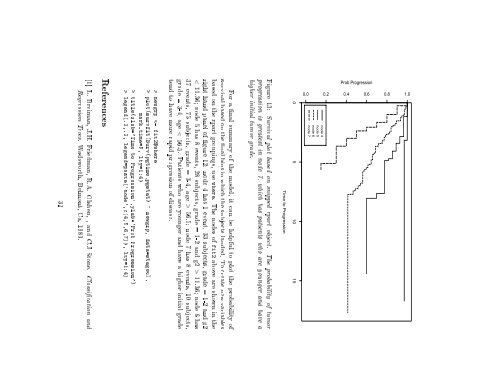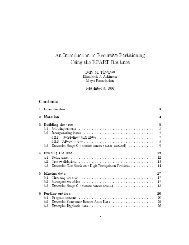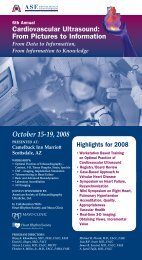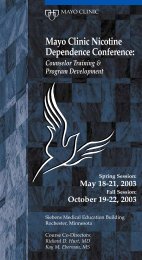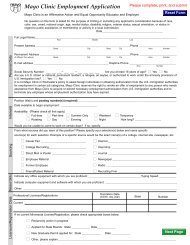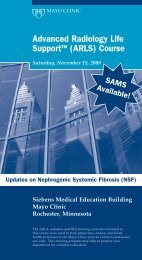An Introduction to Recursive Partitioning Using the RPART Routines ...
An Introduction to Recursive Partitioning Using the RPART Routines ...
An Introduction to Recursive Partitioning Using the RPART Routines ...
You also want an ePaper? Increase the reach of your titles
YUMPU automatically turns print PDFs into web optimized ePapers that Google loves.
Prob Progression<br />
0.0 0.2 0.4 0.6 0.8 1.0<br />
node 4<br />
node 5<br />
node 6<br />
node 7<br />
0 5 10 15<br />
Time <strong>to</strong> Progression<br />
Figure 13: Survival plot based on snipped rpart object. The probability of tumor<br />
progression is greatest in node 7, which has patients who are younger and have a<br />
higher initial tumor grade.<br />
For a nal summary of <strong>the</strong> model, it can be helpful <strong>to</strong> plot <strong>the</strong> probability of<br />
survival based on <strong>the</strong> nal bins in which <strong>the</strong> subjects landed. To create new variables<br />
based on <strong>the</strong> rpart groupings, use where. The nodes of fit2 above are shown in <strong>the</strong><br />
right hand panel of gure 12: node 4 has 1 event, 33 subjects, grade =1-2and g2<br />
< 11.36 node 5 has 8 events, 28 subjects, grade = 1-2 and g2 > 11.36 node 6 has<br />
37 events, 75 subjects, grade = 3-4, age > 56.5 node 7 has 8 events, 10 subjects,<br />
grade = 3-4, age < 56.5. Patients who are younger and have a higher initial grade<br />
tend <strong>to</strong> have more rapid progression of disease.<br />
> newgrp plot(survfit(Surv(pgtime,pgstat) ~ newgrp, data=stagec),<br />
mark.time=F, lty=1:4)<br />
> title(xlab='Time <strong>to</strong> Progression',ylab='Prob Progression')<br />
> legend(.2,.2, legend=paste('node',c(4,5,6,7)), lty=1:4)<br />
References<br />
[1] L. Breiman, J.H. Friedman, R.A. Olshen, , and C.J S<strong>to</strong>ne. Classication and<br />
Regression Trees. Wadsworth, Belmont, Ca, 1983.<br />
32


